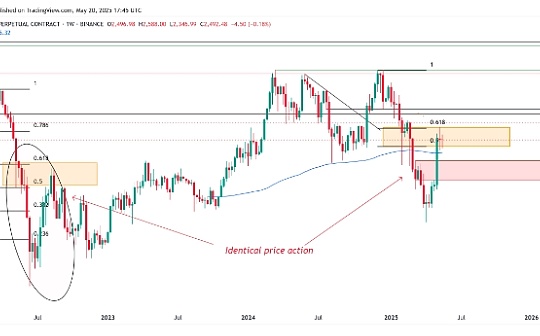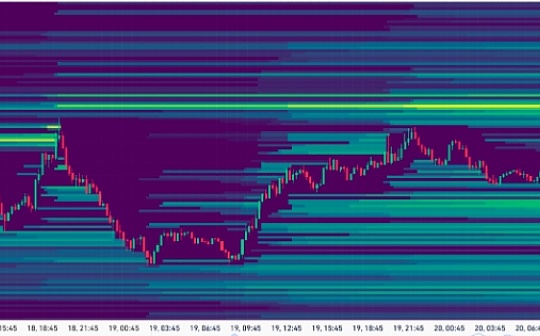Benchmark proposal for Bitcoin native layer 2 network: Setting community standards for truth and trust

Reprinted from chaincatcher
05/21/2025·17DAuthor:Kevin (@kevinliub)
It all started with a coffee chat that wasn't planned—and eventually became the starting point of a mission. Redouane, chief economist at GOAT Network, sat with CIO Eric and CTO Stephen, who are both firm believers in Bitcoin. The chat started with complaining about the confusing use of the term “Layer 2 (Layer 2 Network)”. Now it seems that everyone claims to be the second layer of Bitcoin, but in fact, most projects simply do not follow the core spirit of Bitcoin. They label "Bitcoin L2" for marketing purposes, but the underlying layer relies on federal multi-signature, external consensus mechanisms or highly trusted architectures. This makes "Bitcoin L2" a diluted and abused term.
So, in cups of cold coffee, a mission gradually took shape: we need to define what a network that can truly be called the "Bitcoin native layer 2". They do not want to write a norm limited to the technical route, but rather establish a principle-based standard—a strict norm based on Bitcoin values. This is where this declaration begins.
This proposal sets two levels of standards:
1. Core Must-Haves
Without these conditions, a project cannot call itself a bitcoin native layer 2.
-
Trustless settlement on the Bitcoin mainnet Bitcoin native L2 must be frequently anchored to the Bitcoin mainnet—ideally every block, at least once every few hours. Settlement must include a proof of validity (such as a proof of ZK) with a status commit, not just a Merkle root or signature. Delayed settlement will seriously weaken user security and system trust.
-
Dispute resolution must be anchored to the Bitcoin main network. If fraud or evil behavior occurs, users must be able to directly launch challenges on the Bitcoin main network. No reliance on federal arbitration, MPC, multi-signature committee or centralized approval shall be relied on. The final ruling must be executed by Bitcoin miners, not off-chain intermediaries.
-
Users of the mandatory exit mechanism without third-party permission must be able to unilaterally exit the system at any time. Even if all Sequencer nodes disappear, the exit channel must be continuously open. No custodian, no approval process is required.
-
Proof-based trust minimization bridge mechanism bridges must be non-custodial and can be enforced by proof on Bitcoin. Designed based on the honest assumption of 1-of-n or 0-of-n, without relying entirely on multi-signature, federal or human governance. BTC should never be exposed to third-party trust.
-
Continuous linearity and resilience L2 networks must remain operational in situations such as node downtime, censorship or attack. It needs to be implemented through the decentralized Sequencer architecture. All roles should be open to participation or can be easily replaced, and the system must be self-responsive.
2. Optional enhancements (Nice-to-Haves)
These features are critical to scalability and user experience, but they cannot replace core trust.
-
The standard exit process of a fast and efficient exit mechanism should be completed within hours, not days. In the event of a dispute, the system should also respond quickly and resolve the challenges.
-
The Gas mechanism, which is denominated in native BTC, uses BTC (rather than bridging ETH or altcoin) as a Gas asset, which can enhance trust and ecological consistency.
-
Economic incentive mechanism for honest behavior. If the roles such as Sequencer, Prover, and Challenger are honestly operated, they should receive rewards. Cheating should be punished (such as pledged assets being cut).
The reason why the Ethereum L2 ecosystem has flourished is that the community has gradually reached a consensus on the definition of Rollup (such as the specifications of OP Rollup and ZK Rollup). Similarly, Bitcoin native layer 2 networks also need to condense common standards with high integrity.
If a system cannot do the following:
-
Frequently anchor the main website of Bitcoin,
-
Let users challenge fraud on the main network
-
Run transparently and minimize trust dependencies,
Then it is not the second layer of Bitcoin native. It's just a side chain with a new name.
These principles constitute a set of "living standards" - derived from dissatisfaction, and were born through collaborative improvement, driven by the spirit of Bitcoin. Some existing systems are already very close to these standards, such as Lightning has met several of them, and ZK Rollup is also gradually advancing. However, this standard does not favor any technical route, it is technically neutral. As long as your Rollup, channel or bridge meets this standard, you will be qualified; if you don’t meet it, no matter how good the marketing is, it will be of no use.
This is an invitation: to all builders, investors and users.
Let us defend the integrity of the term "Bitcoin Layer 2". Set clear and principled boundaries and do not disguise a centralized system as L2. Honesty is the foundation, if you are doing a service or sidechain, please tell the truth directly.
As Redouane, Eric and Stephen realized that day, the path to the future has two directions: one is that "Layer 2" becomes an empty brand that can be easily labeled by any system; the other is to turn it into a commitment, a badge that represents justice and trust. We choose the latter.
Bitcoin has won people's trust, and its expansion layer must also deserve this trust. Let us define Layer 2 as “truth” rather than “trend” and jointly build a future worthy of Bitcoin.


 jinse
jinse

